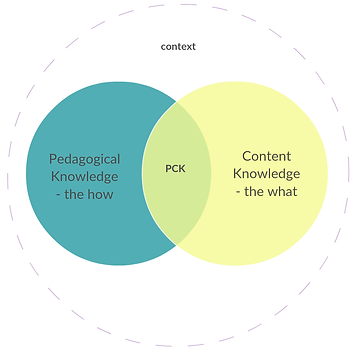Illinois Professional Teaching Standards (IPTS)
Standard 1: Teaching Diverse Students
The competent teacher understands the diverse characteristics and abilities of each student and how individuals develop and learn within the context of their social, economic, cultural, linguistic, and academic experiences. The teacher uses these experiences to create instructional opportunities that maximize student learning.
IMPORTANCE
Students need to envision themselves as artists in the art classroom. Including diverse artists allows students to be connected to the content in the curriculum. Creating an environment where students are embraced by inclusion, increases students comfort level and enhances student learning.


Standard 2: Content Area and Pedagogical Knowledge
The competent teacher has in-depth understanding of content area knowledge that includes central concepts, methods of inquiry, structures of the disciplines, and content area literacy. The teacher creates meaningful learning experiences for each student based upon interactions among content area and pedagogical knowledge, and evidence-based practice.
IMPORTANCE
Teachers need to critically construct a curriculum filled with insightful lessons to help their students make academic advancements. Students cognitive skills are constantly evolving and will cease to improve without the proper guidance and support. When teachers are knowledgeable about the content they teach with pedagogical support, they can offer the essential support for these advancements to flourish.

"I teach children" (Peagogical Knowledge)
+
"I teach art" (Content Knowledge)
-------------------------------------------------------------------------
"I teach children art" (Pedagogical-Content Knowledge)

Standard 3: Planning for Differentiated Instruction
The competent teacher plans and designs instruction based on content area knowledge, diverse student characteristics, student performance data, curriculum goals, and the community context. The teacher plans for ongoing student growth and achievement.
Given that all students need to progress and are expected to achieve similar goals, accommodations should made for students who may have multiple abilities that obstruct average learning habits. It's important that all students receive equity so they can feel confident and perform well in the classroom. Appealing to all students various learning needs provides opportunities for every student to be successful.
IMPORTANCE

Standard 4: Learning Enviornment
The competent teacher structures a safe and healthy learning environment that facilitates cultural and linguistic responsiveness, emotional well-being, self-efficacy, positive social interaction, mutual respect, active engagement, academic risk-taking, self-motivation, and personal goal-setting.
IMPORTANCE
In the art classroom, creating a positive environment for healthy learning is crucial because the art classroom thrives on challenging new ideas, which may cause moments of conflict. Its important for a teacher to use effective management skills and positive reinforcement to ensure that healthy discussions occur and emotional well-being is achieved. Students need to safely express new creative ideas to make cognitive breakthroughs as they aim to earn mastery knowledge.



Standard 5: Instructional Delivery
The competent teacher differentiates instruction by using a variety of strategies that support critical and creative thinking, problem-solving, and continuous growth and learning. This teacher understands that the classroom is a dynamic environment requiring ongoing modification of instruction to enhance learning for each student.
IMPORTANCE
Dynamic learning instruction can help keep students motivated and engaged. Applying various methods of delivery instruction provides students with the opportunity to be exposed to different inputs. This allows students to become more self-aware and deeper understanding as they learn what method is most effective for them to learn best. This inspires a love of learning for students.


Standard 7: Assessment
The competent teacher understands and uses appropriate formative and summative assessments for determining student needs, monitoring student progress, measuring student growth, and evaluating student outcomes. The teacher makes decisions driven by data about curricular and instructional effectiveness and adjusts practices to meet the needs of each student.

IMPORTANCE

Multiple methods of assessment are important to gauge student understanding and teacher instruction. It's important for teachers to be aware of their perpetration and performance in the classroom and students outcomes because it communicates where the strengths and weakness lie within the class. Using specific types of assessment, such as portfolio, may encourage learning outside of the classroom as a sign of intrinsic motivation. The method of instruction is essential to student motivation and well-being.
Standard 8: Collaborative Relationships
The competent teacher builds and maintains collaborative relationships to foster cognitive, linguistic, physical, and social and emotional development. This teacher works as a team member with professional colleagues, students, parents or guardians, and community members.
IMPORTANCE
It's important for students to explore the micro and macro communities in which they exist to effectively communicate by considering others needs. Collaborative opportunities stimulate conversation where students recognize others as sources of new knowledge and realize that they themselves are contributors to the exchange of ideas with their own knowledge.



IMPORTANCE
Standard 9: Professionalism, Leadership, and Advocacy
Through the teachers own experience of collaborative learning among professionals in the field, they become a leader who obtains copious amounts of knowledge. Teachers morals encourage the spread of this knowledge as a means to be a role model for their students as they develop and take on more pivotal roles in society.
The competent teacher is an ethical and reflective practitioner who exhibits professionalism; provides leadership in the learning community; and advocates for students, parents or guardians, and the profession.
